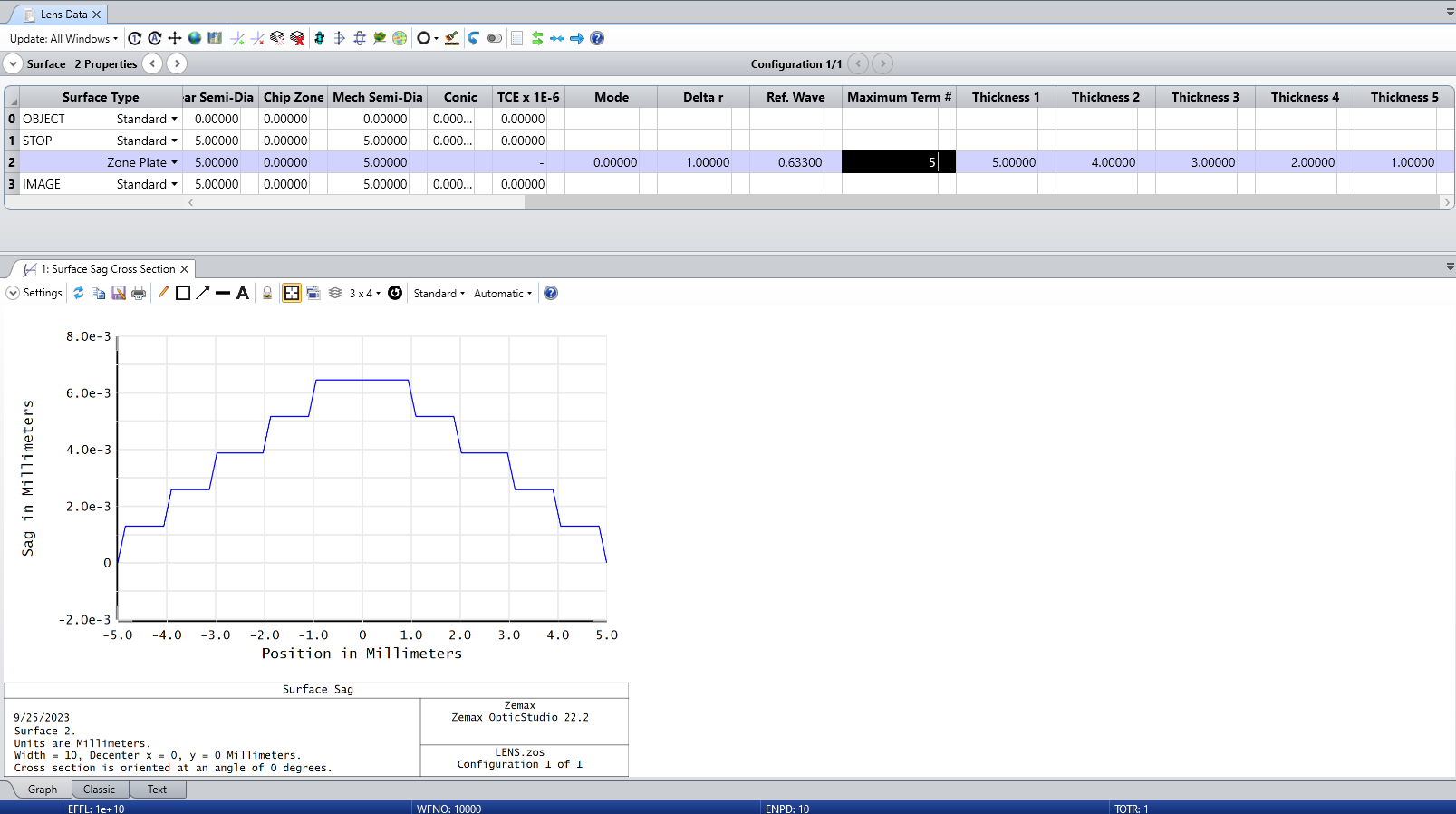Hello,
I would like to know if I can use the sequential ‘zone plate’ surface to construct a staircase lens* with variable zone radii. Below shows an example with equally spaced radii. It’s not clear if the ‘extra data file’ can be used to include individual radii (help screenshot below).
If the ‘zone plate’ surface won’t work, what would be suggested? Can the new composite surfaces be used to do this?
I’m currently using a phase surface (Binary 2) to define ideal behavior, but want to convert to physical surface so I can use POP to simulate the diffraction efficiency.


* Staircase lens reference: https://opg.optica.org/ao/abstract.cfm?uri=ao-32-1-60
Thank you,
John





